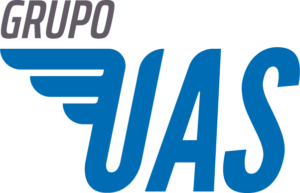Requirements that a drone pilot must meet
To obtain the official drone pilot certificate and become a professional UAS pilot you must comply with the requirements and regulations established by the corresponding aeronautical authority. In Spain they are the following:
- Minimum age: The minimum age to become a drone pilot in Spain is 16 years old.
- Training and certification: Adequate theoretical and practical training on drone operation is required.
- Knowledge of regulations: It is important to have knowledge of the rules and regulations related to drone operation. This includes flight restrictions, prohibited areas, maximum allowed altitudes, security and privacy requirements, among other aspects.
Frequently Asked Questions
How many drone pilot certificates are there?
According to the Implementing Regulation EU 2019/947, three operational categories are established based on the risk of the operation. Based on this, we find three certificates that will allow us to be a drone pilot.
Open category
The Open Category covers low-risk UAS operations. This is further divided into three subcategories: A1, A2 and A3.
- Subcategory A1/A3 certificate. To obtain it, an online training must be completed, after which a theoretical exam will be taken on the platform of the Aviation Safety State Agency (AESA).
- Subcategory A2 certificate. It is necessary for the pilot to have his A1/A3 certificate. This is composed of two parts. The first, as in the previous category, consists of an online theoretical training, after which an exam conducted by AESA must be taken and passed. The second part consists of a flight practice.
Specific Category
The Specific Category comprises those UAS operations with a medium risk. It establishes two scenarios:
- Standard 1 (STS-ES-01) for VLOS Operations (within visual range of the pilot)
- Standard 2 (STS-ES-02) for BVLOS Operations (out of visual range of the pilot)
STS certificate. To become an STS drone pilot it will be necessary to have one or both of the above mentioned certificates online in the Open Category.
In order to obtain it, firstly, an online theoretical training must be done in the AESA platform. Secondly, unlike the previous drone pilot certificates, it is mandatory to perform a flight practice, after which you must successfully pass a practical exam on the maneuvers performed.
For the aforementioned practical part, it is necessary that a training entity issues a certificate of successful completion, without which it is not possible for AESA to issue the STS certificate.
Certified Category
The Certified Category will require, on the one hand, the certification of the UAS by EASA, the certification of the operator and, if applicable, the obtaining of an aviation license by the remote pilot.
Which drones can fly in the open category?
In Subcategory A1 may operate:
- Drones of private construction, with a maximum take-off mass (MTOM) of less than 250 g and a speed of less than 19 m/s;
- Those with a MTOM of less than 250 g, without a class identification label and introduced in the market before January 1, 2024;
- Those with class C0 identification label.
- Those with class C1 marking and therefore complying with the following technical requirements: either a MTOM < 900 g or a transmitted energy in case of impact < 80 J;
In Subcategory A2 they can operate:
- Those with an MTOM of less than 4 kg.
- Those with a Class C2 identification label.
In Subcategory A3, the following may operate:
- Drones of Private construction, with a maximum take-off (MTOM) of less than 25 kg;
- Those with a MTOM of less than 25 kg, without class identification label and introduced to the market before January 1, 2024;
- Those with class identification label C2, C3, C4 or privately built UAS with MTOM up to 25 kg
Which drones can fly in a specific category?
- In Scenario 01 (STS-ES-01), drones with a class C5 identification label may operate.
- In Scenario 02 (STS-ES-02) drones with a class C6 identification label may operate.
What happens if you fly a drone without permission?
To conclude, we will see the legally established penalties for those who make improper use of drones. These will vary depending on the seriousness of the infraction committed, being able to be:
General:
- Minor: between 60 and 45,000 €.
- Serious: between 45,001 and 90,000 €.
- Severe: between 90,001 and 225,000 €.
To individuals or legal entities that carry out activities included in the scope of application of the Aviation Safety Law on a commercial basis or that carry them out in exchange for a non-wage economic consideration:
- Minor: between 4,500 and 70,000 €.
- Serious: between 7,001 and 250,000 €.
- Severe: between 250,001 and 4.5 M €.



